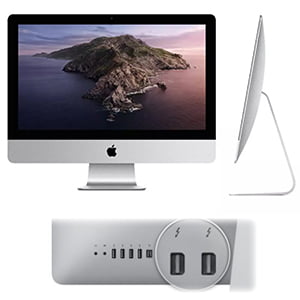Installation and Configuration:
Read More…
Installation and configuration refer to the process of setting up hardware, software, networks, or systems to ensure they are operational and functioning correctly according to the desired specifications and requirements. This process involves the installation of necessary components and software packages, as well as the configuration of settings, parameters, and options to customize the system to meet specific needs.
Hardware Installation / Software Installation / Network Configuration / Server Configuration / Security Configuration / Backup and Recovery Setup / Testing and Validation.
System Design and Integration:
Read More…
System design and integration involve the process of designing and integrating various hardware, software, and network components to create a cohesive and functional IT system that meets specific organizational requirements and objectives. This process encompasses analyzing business needs, selecting appropriate technologies, designing system architecture, and integrating components to ensure seamless operation and optimal performance.
Requirement Analysis / Technology Selection / System Architecture Design / Component Integration / Customization and Configuration.
Maintenance and Support:
Read More…
Maintenance and support involve the ongoing activities and services provided to ensure the continued functionality, reliability, and performance of IT systems, applications, and infrastructure. These services encompass preventive maintenance, troubleshooting, problem resolution, software updates, and technical assistance to address issues, optimize performance, and minimize downtime.
Preventive Maintenance / Troubleshooting and Issue Resolution / Software Updates and Patch Management / Hardware Maintenance and Replacement / Performance Monitoring and Optimization / Technical Assistance and User Support.
Access Control Systems:
Read More…
Access control systems are security solutions designed to regulate and manage access to physical or digital resources within an organization. These systems allow organizations to control who can enter specific areas, use certain assets, or access sensitive information, thereby enhancing security and ensuring compliance with regulatory requirements.
Authentication Mechanisms / Authorization Policies / Physical Access Control / Logical Access Control / Centralized Management / Integration with Security Systems.
Remote Monitoring:
Read More…
Remote monitoring is a proactive approach to overseeing and managing IT systems, networks, devices, and assets from a remote location. It involves the use of monitoring tools, software applications, and sensors to collect real-time data and performance metrics, allowing administrators or service providers to monitor and analyze the health, status, and behavior of IT infrastructure without being physically present on-site.
Real-time Monitoring / Performance Metrics and Alerts / Fault Detection and Diagnostics / Security Monitoring and Compliance / Asset Inventory and Management / Remote Troubleshooting and Support / Performance Reporting and Analysis.
Security Networks:
Read More…
Security networks, also known as secure networks or secured network infrastructures, are designed to protect data, systems, and resources from unauthorized access, breaches, and cyber threats. These networks employ a range of security measures, protocols, and technologies to safeguard information and ensure the confidentiality, integrity, and availability of sensitive data and critical assets.
Firewalls and Intrusion Prevention Systems (IPS) / Virtual Private Networks (VPNs) / Network Segmentation and Access Controls / Encryption and Data Protection / Intrusion Detection and Security Monitoring / Endpoint Security and Device Management / Security Policies and Compliance.
Software and Firmware Updates:
Read More…
Software and firmware updates refer to the process of releasing and applying updates, patches, or upgrades to software applications, operating systems, and embedded systems to address security vulnerabilities, enhance functionality, improve performance, and fix bugs or issues. These updates are essential for maintaining the security, reliability, and compatibility of software and hardware components within IT systems and devices.
Security Patching / Bug Fixes and Performance Improvements / Feature Enhancements and Functionality Updates / Compatibility and Interoperability / Automated Update Mechanisms / Testing and Validation.
Integration with Automation Systems:
Read More…
Integration with automation systems involves connecting and integrating various hardware, software, and devices within an organization’s infrastructure to streamline processes, improve efficiency, and enable automation of repetitive tasks. This integration allows disparate systems to communicate, share data, and coordinate actions seamlessly, facilitating a more connected and agile operational environment.
Interoperability and Compatibility / Data Exchange and Synchronization / Sensor and Device Integration / Centralized Control and Management / Customization and Scalability / Security and Compliance.

![DELL / LATITUDE 3580 [32Gb RAM + 1Tb SSD]](https://atihtechnology.com/wp-content/uploads/2025/01/Dell_Latitude-3580-300x300.jpg)

